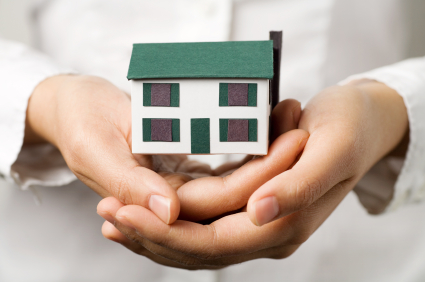The Landlord’s Guide to Property Safety
By Brentnie Daggett
One of the most basic responsibilities for housing providers entails landlords and property managers maintaining safe and habitable living conditions for their tenants.
Most states have requirements to ensure that renters are provided with safe and livable homes. These basic rights, known as the implied warranty of habitability, originated as a result of court decisions in the late 1970’s and is the base structure on which all landlords should develop any safety checklists used.
So what exactly does this mean in terms of provisions? The property owner must ensure that: basic building structures are intact, common areas are safe and clean, there is reasonable access to cold and hot water, trash receptacles and pickup is available, living space is free of vermin and (in most states) that the space is safe from foreseeable theft or criminal intrusion.
Since safety is such a crucial aspect of managing rentals, utilizing a safety checklist will help you address any issues before they become a safety risk or a legal liability.
Indoor Safety Feature Check:
- Gas Safety: annual safety check on each appliances, pipes or flues that utilize gas
- Electrical Safety:
- Ensure outlets are in working order and panels are secure. Do extra inspections during turnover to ensure past tenants did not make unauthorized electric alterations.
- Check each light to ensure switches are working smoothly, delay could indicate a fire-hazard.
- Inspect dryer vents, and ensure that exhaust is being released while the dryer is running. A blockage could cause a fire, and might need to be handled with a vacuum hose or by a professional.
- Fire Safety:
- Ensure all smoke and carbon monoxide alarms are in working order, double-check this during any routine maintenance, as some tenants will not change batteries or take batteries out.
- Ensure tenants have access to fire escape routes
- Supply fire extinguisher for residents (Depending on State/Local fire codes)
- Unclog chimneys so that poor ventilation does not pose a health or fire risk.
- Structural Safety:
- Check that walls, stairs floors and other structure is sound.
- Manage any environmental toxins (mold asbestos and lead paint) appropriately within the space.
- Check for cracks or holes in the walls or ceilings that can lead or collapse, leaks, or infestations.
- Check that doors close and open properly, difficulty evacuating through doors poses a fire hazard. Additionally, doors leading outside should have working locks that deter theft or intrusion.
- Appliance Habitability:
- Verify that all sinks, showers and toilets have proper water pressure and no leaks. Also, check your water heater’s temp and safety relief valve once a year to remove sediment buildup that can cause failure.
- Have your HVAC system professionally inspected, and remind tenants to change air filters as this can prevent expensive repairs.
- Verify that kitchen appliances work properly. Check for potential leaks, that burners ignite properly, and that the refrigerator stays at a proper temp.
Outdoor Safety Feature Check:
- Walkway Safety:
- Provide exterior light source(s) to ensure visibility and deter criminal activity.
- Trim landscape to prevent overgrowth obstructing walkways and allowing for criminal hiding places.
- Make sure all railings are secure and there are antislip or caution guards in place. Before every wet season do a routine check to ensure tenants will not slip or tumble when grabbing a failing railing.
- Structure Safety:
- Check for overgrown tree branches or roots that can cause structural damage, hire a professional to address an area, if need-be.
- Hire a licensed professional inspect the roof for missing or loose shingles, even slight damage can lead to deterioration of the structure’s insulation, wood or drywall. This can make electrical, plumbing and HVAC systems vulnerable.
To ensure a safe property throughout tenancy, provide seasonal safety inspections and be sure to provide an easy way for tenants to submit maintenance requests so you can address them any health or safety concerns appropriately.
Always to respond to any requests in a timely manner and to take them seriously. This will ensure that you will not only be providing the legal habitability and safety requirements, but also encourages tenants to place a request before a minor issue becomes a major–and expensive–repair. If major repair is not addressed appropriately, some states allow tenants to withhold rent (or even sue).
Due to the serious nature of maintenance repairs in regards to safety, save yourself a sticky situation in the future and keep records of any safety inspections you perform. This paperwork will serve as legal documents in the event that anything happens to your rental, so be sure that you have electronic copies–particularly if your office is within your rental buildings. Your rental software should offer unlimited cloud-based storage for these documents, making them accessible in the event you need documentation of the properties condition in the future.
Author Bio

Brentnie is a writer and contributor for Rentec Direct, providers of management software and tenant screening services. Brentnie is always ready to share relevant industry news and tips for new and experienced landlords alike. To learn more about Brentnie and to discover more great tips for rental management visit www.rentecdirect.com.








